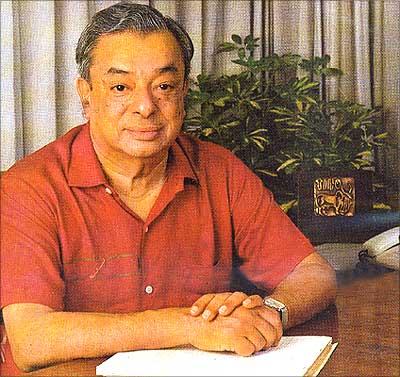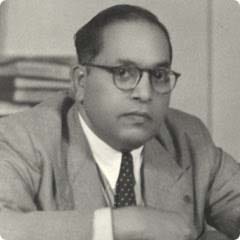
Stories of extreme hardship, braving impossible odds and innumerable sacrifices, abound in the lives of nearly 90 per cent of the students in the country. But among them, some perform exceptionally well. Their academic laurels are so brilliant, that at times their CV looks intimidating. And each one acknowledges that it's the right education that made them what they are today. Careers360 identified 40-odd brilliant students of this country. Most of them came from very dire conditions.
Here, we look at the stellar careers of Dr Sarvepalli Radhakrishnan, Verghese Kurien, BR Ambedkar.
Dr S Radhakrishnan
Sarvepalli Radhakrishnan was born in a middle-class Telugu Brahmin family in Tirutani, close to Madras. His father wanted him to be a priest and did not want his son to learn English but recognising his merit, he sent him to a mission school at Tirupati in 1896. After a short stint at Voorhees College in Vellore, he joined the Christian College, Madras at the age of 17. It was here that Radhakrishnan was trained in European philosophy and diverse theological views, thanks to his mentor, Professor AG Hogg.
During this time, the family obligations precluded Radhakrishnan from applying for a scholarship to study in Britain. Having published in national journals, he finally managed to draw the attention of a larger audience, people in the West in particular, when he published an article, "The Ethics of the Bhagavadgita and Kant" in The International Journal of Ethics in 1911.
In 1921, Radhakrishnan took up the prestigious George V Chair in Philosophy at Calcutta University. Academic recognition came in 1936, when he was offered the Chair of Spalding Professor of Eastern Religions and Ethics at Oxford which he retained for 16 years. And after India's independence, he became active in political affairs and was elected to become the second President of India.
Hirendranath Mukerjee, a veteran CPI leader, reminisced about his meeting with Dr Radhakrishnan in England in the journal Mainstream in 1975, "Shedding his turban but not his long coat, he would board a bus with me to come to my digs for a meal and a chat, and of course, his room in Walton Street were always open to us."
Did you know?
When he became President in 1962 British philosopher Bertrand Russel said, "It is an honour to philosophy that Dr Radhakrishnan should be President of India."
Part I: Education made him: Dr Manmohan Singh
Part II: Kiran Bedi, CV Raman, Shyam Benegal, P Venugopal
Part III: Homi Bhabha, Arun Sarin, Rabindranath Tagore, Hafeez Contractor
Part IV: India's best students: Zubin Mehta, Medha Patkar
Part V: The boy from Rameswaram who became President
Part VI: India's best students who won the Nobel Prize
Part VII: India's best students who became CEOs
Part VIII: India's best students: The 'Metro Man's' journey
Part VIIII: RA Mashelkar: All my life I have chased anomalies

In a letter to his grandson, featured in his book I Too Had a Dream, Kurien wrote, "I could have pursued a career in metallurgy and perhaps become the chief executive of a large company. Yet, I chose none of these because somewhere, deep down, I knew I could make a more meaningful contribution by working here in Anand, Gujarat." This expression came after much struggle and much after he made an immense contribution to 'Operation Flood', which replicated the White Revolution pattern of the 1970s, and trebled India's milk production within a span of two-and-a-half decades, to make India the world's largest milk producer.
Kurien was born on November 26, 1921 at Kozhikode, Kerala into an illustrious family; his father was a civil surgeon in Cochin. He graduated in Physics from Loyola College, Madras in 1940 and got a BE (Mechanical) from the University of Madras. After graduating, he joined the Tata Steel Technical Institute, Jamshedpur from where he graduated in 1946.
After completing his Master's in Science in Metallurgical Engineering from Michigan State University, Kurien had to serve in a rural region in India because his US study was sponsored by Indian Government. In May 1949, he was posted as a dairy engineer at the Government Research Creamery in Anand District in Gujarat. In his book, he wrote that at the start of his career, he hated Anand.
But around the same time, the infant cooperative dairy, Kaira District Co-operative Milk Producers' Union (KDCMPUL) -- now famous as Amul -- was fighting a battle with a privately owned dairy. Young Kurien was intrigued by a band of tenacious dairy farmers and volunteered to help to set up a processing plant. This marked the birth of AMUL.
More than his competence in bringing technical and administrative skills to the co-operative, his contribution was his commitment to the cause. Dr Kurien empowered the Indian farmer combining development, technology, and marketing.
His association with building the co-operative society from 'scratch' gradually made him fall in love with Anand and today, he even wants his body to be cremated in Anand.
Awards & Honours

Founding Father, modern India
MA, Columbia University, NYC (1915)
DSc, London School of Economics
PhD, Columbia University (1928)
LLD (Hons), Columbia University (1952)
The fourteenth and youngest child in his family, Bhimrao Sakpal became aware of his untouchable status early on. At school in Satara, he was made to sit on a mat on the classroom floor, while the others sat at their desks. He had to cup his hand together for a drink of water, while his classmates drank from cups. But one 'high caste' teacher grew fond of him.
He rechristened him with the surname 'Ambedkar' and encouraged him to study as he was very good at studies. When his mother passed away, his family moved to a one-room chawl in Parel, Bombay, and he attended Elphinstone High School. His father woke him up every morning at 2 am, to study while his siblings were asleep. At school he was not allowed to take up Sanskrit as it was the language of the Holy Scriptures; he was given Persian. At the age of 17, he passed matriculation, a first for his community, and as was the tradition at the time, he married Rambai, a nine-year-old.
But education remained his goal and after completing his BA in 1912, he won a scholarship from the Maharajah of Baroda for the world-renowned Columbia University in New York. Here, he spent most of his time in the library and studied for 18 hours a day.
In 1915, he earned an MA and a DSc at the London School of Economics before being awarded his PhD in 1927. In 1952, Columbia presented him with an honorary doctorate for his service as "a great social reformer and a valiant upholder of human rights" (source Columbia University). After his return to India, though his academic laurels earned him high paying jobs, the social ostracism he faced made Ambedkar acutely aware of the condition of Dalits in the country and led him to wage a lifelong struggle to ensure a dignified existence to his brethren.
Though his commitment to Dalit cause brought him into direct confrontation with Congress many a times, like a true nationalist, he joined independent India's first cabinet as a law minister and was the prime architect of the Indian Constitution On November 26, 1949, Ambedkar's Draft of the Constitution of India was adopted but soon after, in 1950, he resigned as law minister when Jawaharlal Nehru's cabinet refused to pass the Women's Rights Bill.
Between 1950-56 he was very active in organisation and emancipation of Dalits and converted himself to Buddhism to
escape the clutches of untouchability. Dr BR Ambedkar passed away in 1956, leaving behind a legacy of ideas, books
and his passion for equality.
Did you know...
Papers presented